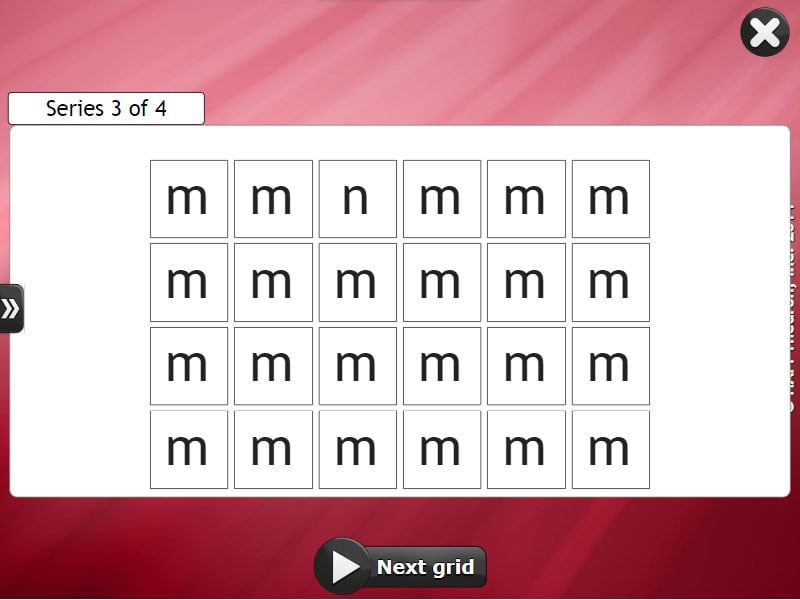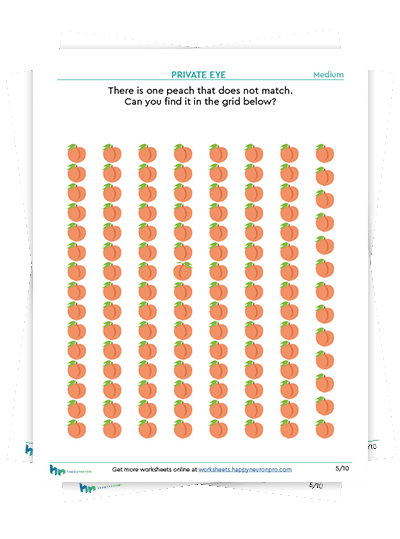
Please note that you can only play the exercise once on this page. See the free trial section below for full access!
In this exercise, the user must locate a symbol in a grid full of intricate symbols and letters.

The brain receives lots of sensory information and must choose what to focus on and ignore. Many neurological disorders—including schizophrenia, autism, and attention deficit hyperactivity disorder—involve problems concentrating and ignoring distractions. Scientists have long believed that a brain region called the prefrontal cortex (PFC) selects what information to focus on. The neocortex, the brain’s outermost layer, is found only in mammals and is responsible for humans’ ability to recognize patterns.
This task primarily exercises the user’s sustained attention and concentration skills. Individuals may use these skills when proofreading a text message or email, checking what is in stock, and determining what they need to order.
You can modify:
Over 1,900 unique exercise configurations and significant data set depth.

Pricing + Offers


© 2023 HappyNeuron is a Product of Humans Matter